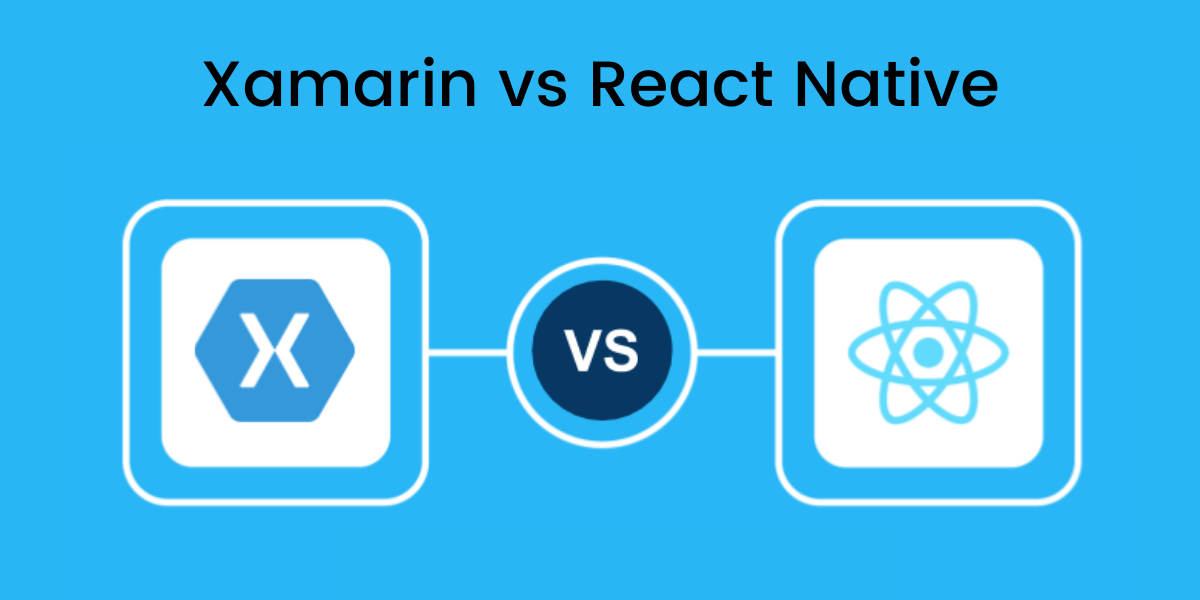
Xamarin vs React Native: Which Is Better In 2021?
- By Ravi Makhija
- 15-04-2021
- Technology
Entrepreneurs around the world are racing to build applications that are innovative and based on new ideas.
Businesses see a huge potential in developing their apps to cater to the needs of their customers and solve their pain points.
This demand has pushed the app market to cross the $190 billion mark in 2020 and the momentum is still going strong.
All these have encouraged app developers to try out new frameworks for streamlining their app development process.
Nowadays, most app developers work on cross-platform applications. These apps are designed in such a way that they can work seamlessly on multiple platforms.
When we talk about different frameworks that help app developers to create cross-platform apps, then two names come to the fore - React Native and Xamarin.
These two platforms allow the app developer to write code for an app only once and deploy the app on different platforms. While the end objectives of both these platforms are similar, certain differences make them distinct from one another.
Since choosing the right platform would have an enormous impact on the business, it makes sense to find out which one of these is best for your tech stack requirements
To find more, read this article.
The major point of differences between Xamarin and React Native frameworks
Both React Native and Xamarin are highly capable frameworks. They have several advantages that set them apart.
We have put together a list of such differences so that you can make an informed choice about which one to choose for making your mobile app.
React Native
Huge community support
The developers’ community created this open-source framework. It has a huge online developer community support.
This vibrant community is driving innovation in app development through this framework.
Live and hot reloading
React Native supports the complementary live and hot reloading features.
In the live reloading, the framework can seamlessly read the changes made by the developer and compile them in real-time.
In this process, it refreshes the entire app after it had made the changes.
The hot module replacement, on the other hand, validates any change in applications without reloading it. In this process, only the changed components are updated.
Code reusability
One of the advantages of using the React Native framework is that you can reuse a lot of codes which not only saves time but also lowers the cost of the app development process.
Third-party plug-ins support
As the framework is based on JavaScript, it supports third-party plug-ins.
This allows the framework to use different native and JavaScript modules to enhance the overall features and functionalities of the app.
Some important functionalities that can be added through such third-party plug-ins include two-factor authentication, including maps, and many more.
Amazing performance
As this framework can use native modules and multiple components to build a highly functional app, it creates codes to native APIs with no interference.
This helps the developers to create performance-centric mobile applications at a lower cost and time.
These were some main points due to which react native is suitable for building mobile apps. Apart from this, there are various other reasons why use React Native for mobile app development.
Xamarin
One technology stack
The ecosystem of this open-source framework allows the developer to build an application for any platform in one go.
It uses three important tools; C#, .NET, and Visual Studio to build applications for multiple platforms.
Shared code
Any application made through Xamarin for any platform has a common code base.
Besides this, they also share similar database access, network communication, and business logic.
Therefore, the developer has to make changes only to the user interface so that different platforms get their unique native feel and look.
Native performance
Xamarin framework offers an unmatched performance compared to other cross-development frameworks that are found in the market.
It offers a native application-like performance across different platforms.
Seamless user experience
Any application that is made through the Xamarin framework offers an amazing user experience.
The app developer can use the integrated Xamarin .iOS and Xamarin. Android to customize any elements in the UI of the app to get the desired look and feel.
A growing number of libraries
The Microsoft team is regularly creating ready-to-use components that are based on common scenarios as well as use cases.
This has immensely helped the developers to create an application and customize it in any way they desire.
Conclusion
If you carefully analyze the pros and cons of these two powerful frameworks, you will find that both are highly capable to build cross-platform apps.
While there are many areas where the React Native framework does better than Xamarin, but if you put a performance and short compilation times over other factors, then Xamarin steals the show.
It all boils down to your unique needs, and which one of these frameworks can fulfill them the best.
Recent blog
.png)
Top 03 Audio Enhancers to Enhance Your Voice in Minutes
Technology | 18-04-2024.png)
Offshore and Nearshore Mobile App Development: A Guide
Mobile App Development | 17-04-2024.png)




